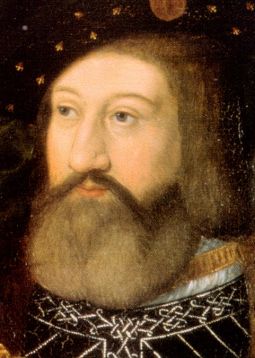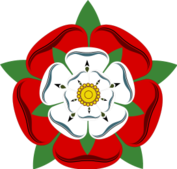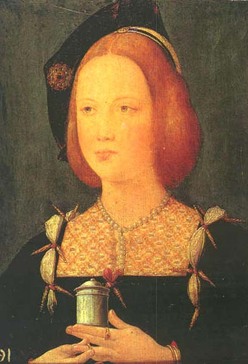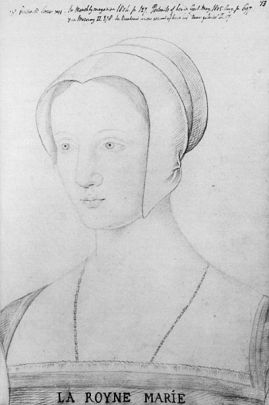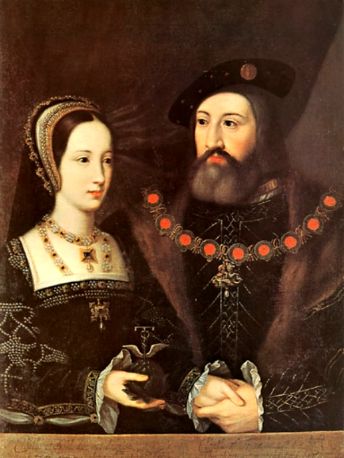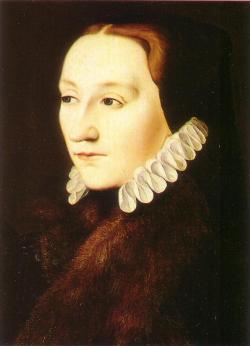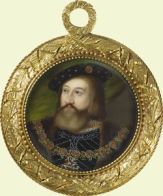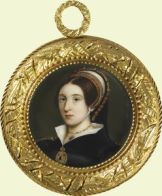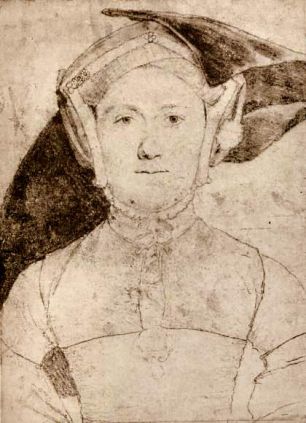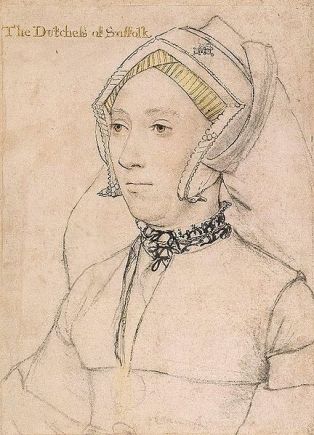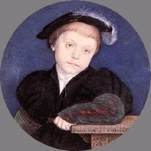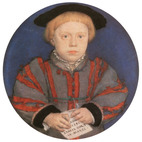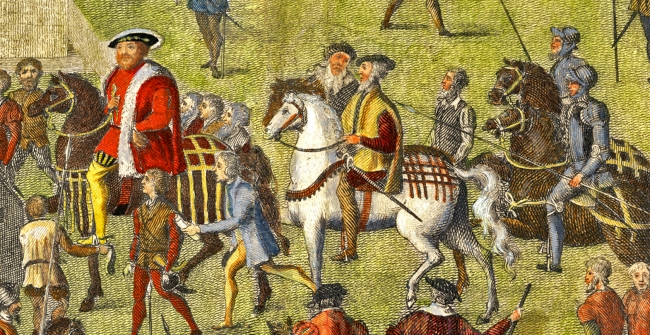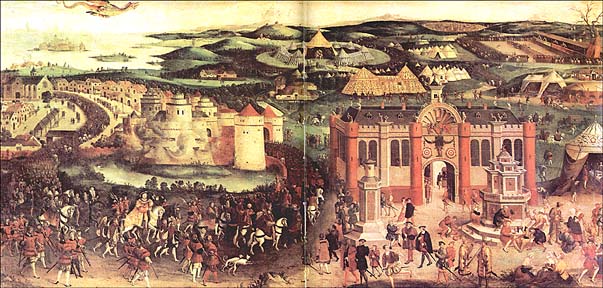Charles Brandon - Historical profile
Jump to navigation
Jump to search
 | The History of Charles Brandon 1st Duke of Suffolk 1484 - 1545 (61 yrs) Known as "a second king" Click EasyEdit to update this page! (Don't see the EasyEdit button above? <a href="/#signin" target="_self">Sign in</a> or <a href="/accountnew" target="_self">Sign up</a>.) |
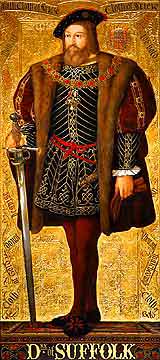 Charles father, William Brandon, died fighting for Henry Tudor (later King Henry VII) in 1485. Charles father, William Brandon, died fighting for Henry Tudor (later King Henry VII) in 1485. A large, athletic man, young Charles Brandon was about the only member of Henry VIII’s entourage capable of standing up to Henry VIII in a tournament. He proved his personal courage in the 1513 campaign against France (for which he received a viscountcy). When he was given military command in 1523 his army came within 30 miles of Paris and he successufully laid siege to Bolougne in 1542–44. Young Charles had undergone an embarrassing marital situation which revealed his ambition and callousness. In 1505, he had become engaged to Anne Browne, a young woman of impressive lineage.Charles and Anne were betrothed per verba de praesenti, a binding contract under canon law. In such cases, there was no ceremony or witnesses; as one can imagine, this led to several unpleasant cases of men and (more rarely) women repudiating their betrothed if they lacked proper respect for church law. Charles apparently did. He and Anne slept together, as evidenced by the birth of a daughter in 1506, but he did not marry her. Instead, he married her aunt, a very wealthy widow named Margaret Neville Mortimer. The marriage was never taken seriously due to its mercenary nature and, more importantly, legal action begun by Anne's angry family. Eventually, the Mortimer marriage was annulled due to the previous contract and Charles married Anne in a well-attended public ceremony. They had another daughter in 1510; Anne Browne died just two years later. 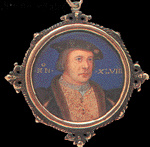 By late 1512, Charles had recovered from his grief enough to contemplate yet another union. This was perhaps even more mercenary since his betrothed was an eight-year-old orphan. It was common practice for the Crown to assume guardianship of an orphaned minor child who had inherited property. The Crown then sold the guardianship to the highest bidder, often the child's own relatives who wanted to receive the property revenues until the child came of age and decide whom they would marry. Charles had been given the wardship of Elizabeth Grey, the heiress to Lord Lisle of Sparsholt in Berkshire. This, along with various offices, grants & pensions, was a mark of Henry's continued favor. In early 1513, Charles announced his engagement to the girl and, on 15 May 1513, the king created him Viscount Lisle, in right of his betrothed wife. Charles Brandon finally had a noble title and even more property. But later Elizabeth repudiated him. By late 1512, Charles had recovered from his grief enough to contemplate yet another union. This was perhaps even more mercenary since his betrothed was an eight-year-old orphan. It was common practice for the Crown to assume guardianship of an orphaned minor child who had inherited property. The Crown then sold the guardianship to the highest bidder, often the child's own relatives who wanted to receive the property revenues until the child came of age and decide whom they would marry. Charles had been given the wardship of Elizabeth Grey, the heiress to Lord Lisle of Sparsholt in Berkshire. This, along with various offices, grants & pensions, was a mark of Henry's continued favor. In early 1513, Charles announced his engagement to the girl and, on 15 May 1513, the king created him Viscount Lisle, in right of his betrothed wife. Charles Brandon finally had a noble title and even more property. But later Elizabeth repudiated him.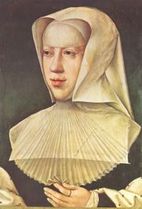 He also made a fool of himself by flirting with Margaret, the twice-widowed, 33-year-old daughter of Hapsburg Emperor Maximilian. Once again, Charles Brandon was demonstrating his heavy-handed flair for the ladies. In the end, he greatly offended Margaret by encouraging gossip about their meeting. In particular, it stressed her attraction to him and a possible marriage. As a Hapsburg princess, she was not amused and Henry VIII was forced to make a public apology. But he was not angry with his friend because soon after, he made him Duke of Suffolk. He also made a fool of himself by flirting with Margaret, the twice-widowed, 33-year-old daughter of Hapsburg Emperor Maximilian. Once again, Charles Brandon was demonstrating his heavy-handed flair for the ladies. In the end, he greatly offended Margaret by encouraging gossip about their meeting. In particular, it stressed her attraction to him and a possible marriage. As a Hapsburg princess, she was not amused and Henry VIII was forced to make a public apology. But he was not angry with his friend because soon after, he made him Duke of Suffolk.In February 1514, Henry made Brandon Duke of Suffolk. | 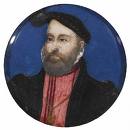 Miniature by Lucas Horenbout, possibly of Charles Brandon, 1st Duke of Suffolk. Miniature by Lucas Horenbout, possibly of Charles Brandon, 1st Duke of Suffolk.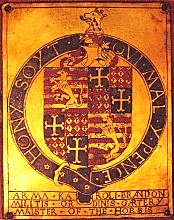 Charles Brandon's stall plate which can be seen in the seventh stall on the north side of the Quire in St George’s Chapel at Windsor Castle 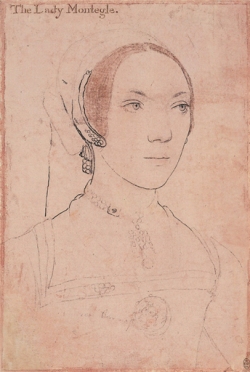 MARY BRANDON (1510-1541+) was the younger daughter of Charles by Anne Browne (d. 1510). She married Thomas Stanley, 2nd baron Mounteagle (May 25,1507-August 15,1560) and was the mother of William, 3rd baron (1527-November 10,1581), Elizabeth, Margaret, Anne, and George. In the 1530s, Mary was almost constantly at court. In 1538, Mounteagle complained of misbehavior on his wife’s part to Thomas Cromwell but nothing seems to have come of the allegations. Mary was a favourite lady in waiting to Jane Seymour. Portraits: the drawing by Hans Holbein the Younger labeled “The Lady Montegle.” ANNE BRANDON (c.1507-January 1558) Anne Brandon led a controversial life. At the time she was most likely born, her father, Charles Brandon, had abandoned her mother, Anne Browne to whom he had been betrothed however he finally returned to her mother and married her in 1509. In 1514, Brandon secured a place for Anne, aged about seven, at the court of Margaret of Savoy. She remained there for nearly two years. While she was abroad, her father married Mary Tudor, Henry VIII’s sister. When Anne returned to England, she lived with them at Westhorpe Hall. To ensure the legitimacy of Brandon’s children by Mary Tudor, a papal bull was secured from Pope Clement VII to confirm that the divorce from Margaret Neville was valid. This also settled the question of Anne's legitimacy. In 1531, Anne married Edward Grey, baron Grey of Powys (1503- July 12,1551). It was not a happy marriage and by 1537 Anne had left her husband for a lover, Randall Haworth or Hanworth, and Grey had taken a mistress, Jane Orwell, daughter of Sir Lewis Orwell. In that year, her father attempted to force Lord Powys to support Anne. With Lord Cromwell’s help, he succeeded in obtaining an annuity of £100 for her, but in 1540, Powys petitioned the Privy Council to punish Anne for adultery and also claimed that she was conspiring with Haworth to murder him. No official action seems to have been taken against her, and she remained with her lover, which may be why she was left out of her father’s will. At some point between 1545 and 1551, Anne entered into a "corrupt understanding" with John Beaumont, a judge in Chancery, whereby she obtained lands with forged documents (supposedly generated by her late father) and then sold those lands to Beaumont. This defrauded her half sister Frances's husband, Henry Grey, marquis of Dorset. The scheme came to light in 1552 and Beaumont was arrested, but Anne does not seem to have been punished. By then, Lord Powys was dead and she had married Haworth. She had also written her will, dated October 29, 1551, although she was not to die until early 1558. She was buried on January 13 of that year, either in Westminster Abbey or in the adjoining St. Margaret's Church. . |
| Henry's sister Mary Tudor fell for Charles and all contemporary accounts remark on Mary's great beauty, particularly her clear complexion and long red-gold hair, the Tudor trademark so Charles too became smitten. | |
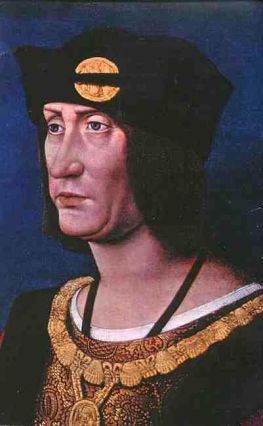 The marriage of Princess Mary to King Louis XII of France lasted for eighty-two days. On 31 Dec 1514, King Louis died quite abruptly. Despite his ill health, he had been quite active during his marriage (a factor which may have contributed to his demise; he boasted that on their wedding night, he had 'crossed the river' three times). Henry's sister Mary was now a widow at 19 years old. Charles had been sent to France by Henry, specifically promising to keep his relations with the widow on a formal basis. | The Widow Mary - dowager queen of France Before Louis' death, he was visited by the Duke of Suffolk on a diplomatic trip and Charles wrote to Henry that his sister was discreet and dignified. This undoubtedly relieved both men; they had perhaps wondered how Mary would greet her true love. Mary, however, was aware of her position as Queen of France and, during her brief marriage, conducted herself with dignity. |
The Brandons had four children of their own: Henry, born in 1516, who died in 1522, Lady Frances Brandon; born in 1517, Lady Eleanor Brandon; born in 1524 and a second son, also named Henry, born in 1523 and created Earl of Lincoln in 1525, who died in 1534. Mary also invited Charles's daughters by his first marriage to come and live with her. possibly LADY FRANCES BRANDON Duchess of Suffolk (July 16, 1517-November 20,1559) The daughter of Charles and Mary Tudor. Frances Brandon was one of Henry VIII’s nieces and therefore in line for the throne. She married Henry Grey, marquess of Dorset (January 12,1517-February 23,1554), in 1533 and had a girl and a boy who died young and then three daughters, Lady Jane Grey (1537-February 12,1554), Lady Catherine (August 1540-January 27,1568) and Lady Mary (1545-April 20,1578) and was a prominent figure at court during the reigns of Henry VIII and his children. After the deaths of her father and half brothers, her husband was granted the Suffolk title, making Frances, Duchess of Suffolk, and creating occasional confusion with her stepmother, Catherine Willoughby. Frances was again married on 9 March 1544 to Adrian Stokes, Master of the Horse by which she had a daughter, Elizabeth, who died as an infant. See also : The King's Heirs | It was a most emotional reunion between Mary & Charles as Mary was already in love with him. She accused him of taking her to England only to have her married off again against her will. He protested but she Charles was always ambitious and rarely foolish but he knew that Mary would be a great prize; after all, he harboured no overt dynastic ambitions but six years of marriage had produced no living child for Henry VIII. Perhaps Suffolk and Mary would create a new royal line. And she was a royal princess and queen, just twenty years old and madly in love with him. Suffolk was swayed by tears and ambition and, sometime in February 1515, they married secretly at the Cluny chapel. Henry's reaction was not favourable. Brandon had written to Cardinal Thomas Wolsey for support and he received a prompt reply but it hardly comforted him; the king could not believe his most trusted friend had betrayed him but, if it were true, the newlyweds had to pay a stiff penalty - literally. They must pay back Mary's marriage portion in annual installments of 4000 pds, leaving her just 6000 pds to live on. She must return all the plate and jewels she had taken to France as her dowry as well as the many gifts King Louis had given her. Beyond that, they must hasten to beg the king for forgiveness. Suffolk and Mary did just that, both blaming her for the hasty marriage. Suffolk wrote: "Sir, for the passion of God, let it not be in your heart against me, and rather than you should hold me in mistrust, strike off my head and let me not live." We can assume that Wolsey had perhaps exaggerated Henry's displeasure since he wanted Suffolk's gratitude. Henry was willing enough to forgive his best friend and favorite sister, after she turned over all her jewels and plate from France and signed a contract to repay the 24000 pds spent on her first marriage in the annual installments of 4000 pds. It was obvious that Henry was not surprised by the marriage; he was mostly angry at Suffolk for breaking his word. Suffolk and Mary were wed again at Greenwich Palace on 13 May with King Henry VIII and Queen Katherine of Aragon in attendance. There was feasting and celebration but it was strictly a family affair and foreign ambassadors wondered if they should congratulate the couple. After all, the situation was odd and there were some (mostly on the king's council) who disapproved of the match. But, for the most part, there were no hard feelings or grudges. Suffolk was a popular man, good-looking and charming, and few - even in Tudor England - could resist such a grand love story. After all, they had risked everything to be together. Before long, the Suffolks were back in the king's good graces. |
| By 1531, Suffolk's daughters with Anne Browne were wed to titled men. His eldest daughter with Mary, the Lady Frances, was engaged to Henry Grey third Marquess of Dorset, descendant of Queen Elizabeth Woodville; before her marriage to Edward IV, she had been married to John Grey and had two sons by him. It was from the elder son that Henry Grey was descended. Frances and Henry were the parents of Lady Jane Grey. The celebration of Frances's wedding to Henry Grey was held at the Suffolk home in London. It was Mary's last visit to the city. She was increasingly ill and also uncomfortable with her brother. His favor was no longer certain. He had married the pregnant Anne Boleyn in a secret ceremony. Suffolk was put in charge of the new queen's coronation. Charles wife Mary's troubles increased when her brother, Henry fell for Anne Boleyn and began the procedures to divorce Mary's friend Queen Katherine of Aragon. As a result Mary stayed away from Court as much as possible, straining the relationship between herself and her husband as well. Charles was the perfect courtier, supporting all his desires. However, his wife,Mary's health had been deteriorating and on the 25th June 1533 she died. She was thirty-eight years old. Her death was not considered important news since most people were concerned with the impending birth of Anne Boleyn's child, destined to be Queen Elizabeth I. Mary had seen her husband in early May but his duties kept him busy; it was a hurried visit and she simply wasted away in the next few weeks. Her brother ordered requiem masses to be sung at Westminster Abbey but showed no other sign of mourning. He was, after all, in the midst of the Reformation. Charles Brandon did not attend the funeral but it was a marvelous affair. She lay in state in the chapel of Westhorpe Hall and masses were said for her in both Westminster Abbey and St. Paul's Cathedral. She was finally buried in the Abbey of St. Edmund. Two centuries later, her tomb was moved to St. Mary's Church, Bury St. Edmunds. | Lady Eleanor Brandon Lady Eleanor was the youngest daughter of Charles and Mary Tudor. She married Henry Clifford, 2nd Earl of Cumberland (1517-January 2,1570) in 1533, by whom she had two sons, Henry and Charles, who died young and a daughter, Margaret (1540-September 29,1596).Countess of Cumberland (1519 - September 27, 1547) Eleanor Clifford, along with her infant son Henry, was taken prisoner by the rebels during the Pilgrimage of Grace in 1536 in an attempt to make her father-in-law, the Earl of Cumberland, relinquish Skipton Castle, but was rescued. She did not live long enough to become involved in the quarrel over the succession, but she passed her dangerous inheritance of royal blood on to her daughter. Portrait: sketch by Holbein the younger. |
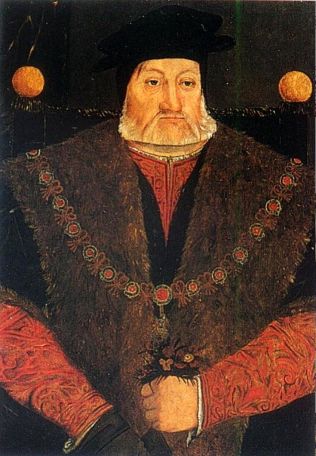 circa 1545 - approx 60 yrs old | Suffolk remained in Henry's favor. The king gave his old friend the unpleasant task of persuading Queen Katherine of Aragon to accept the break with Rome and the new title Princess Dowager. He was also to move her to Somersham near Cambridge, a manor known for its dank and unhealthy atmosphere. Katherine would not be bullied; she told Suffolk that he would have to bind her in ropes if he wanted to move her anywhere. After a week of such talks, Suffolk left, having accomplished precious little. He never saw Katherine again. He did attend all the momentous events of the 1530s - he sat at the trials of Sir Thomas More and Anne Boleyn, he was even present at the scaffold when she was beheaded. He also helped lead forces to end the Pilgrimage of the Grace, one of the most serious problems of Henry's reign. Meanwhile, his wife gave birth to a second son called Charles and his daughter Frances, after two still-births, gave birth to a healthy baby girl, named Jane Grey, probably after Queen Jane Seymour. The exact date of birth is not known, but it was probably October and eclipsed by the birth - finally! - of Henry's son, Prince Edward Tudor\. Suffolk acted as godfather to the new prince. |
The last years of his life were quite happy. He and Catherine Brandon (Willoughby) were affectionate, they had two healthy sons, and the dissolution of the monasteries allowed the king to grant him more lands and pensions. He and his wife entertained the king and his new wife Katherine Howard; and, of course, Suffolk was one the men who arrested and extracted a confession from that queen. He died quite suddenly on 22 August 1545, his last official business being plans for an invasion of France. But he was sixty years old, a good age at the time, and - once the news was known - it was not surprising. Suffolk requested a quiet funeral but the king would have none of it - he ordered a lavish ceremony at St George's Chapel in Windsor Castle. Henry planned and paid for the service. It was undoubtedly an emotional occasion for him; after all, Charles Brandon had been his companion for virtually his entire life. In fact, Suffolk was one of the few men who could still remember the Bluff King Hal of legend. Henry was now overweight, bald, and suffering from a variety of physical ailments. He would only outlive his friend by about eighteen months. In that time, he had good cause to regret the death of his one true friend. | Catherine Willoughby (called Catherine Brooke in the series) Brandon's ward & his son's betrothed who became his 3rd wife (after the death of Princess Mary - called Princess Margaret Tudor in the series) & mother of Charles & Henry 2nd and 3rd Dukes of Suffolk |
| Westhorpe Hall, Suffolk, was built for Charles Brandon, Duke of Suffolk, in c. 1526-33 as his main country residence, but financial problems following the death of his wife, Mary Tudor, resulted in the reversion of the property to the Crown. A lack of interest in the Hall resulted in its rapid demise, and it was finally pulled down in the mid eighteenth century so there are no pictures of his residence. | Charles Brandon's sons by Holbein 1541 Left: Henry Brandon, 2nd Duke of Suffolk. aged 5 (born 1535 - died 1551) Right: Charles Brandon, 3rd Duke of Suffolk, aged 3 (born ca. 1537 - died 1551) both died of the sweating sickness within half an hour of each other |
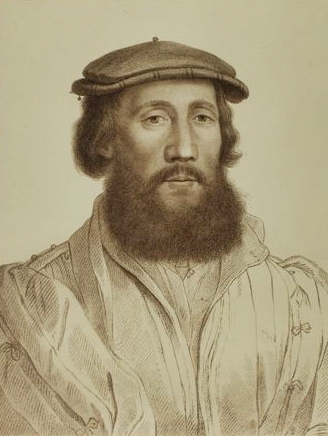 possibly Charles Brandon, Duke of Suffolk engraving by Bartolozzi (1728-1815) after a chalk drawing by Hans Holbein. IMITATIONS OF ORIGINAL DRAWINGS BY HANS HOLBEIN, IN THE COLLECTION OF HIS MAJESTY, FOR THE PORTRAITS OF ILLUSTRIOUS PERSONS OF THE COURT OF HENRY VIII. WITH BIOGRAPHICAL TRACTS. Published by John Chamberlaine, London 1797 | 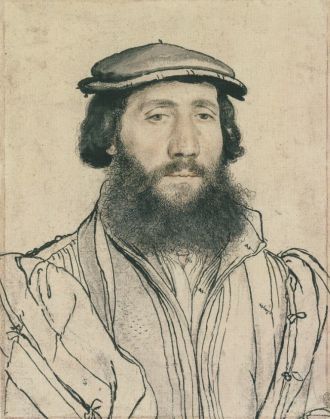 Unknown Man c.1535. By Hans Holbein Charles Brandon would have been 51 years old at this time and this man appears to be younger |
| |
